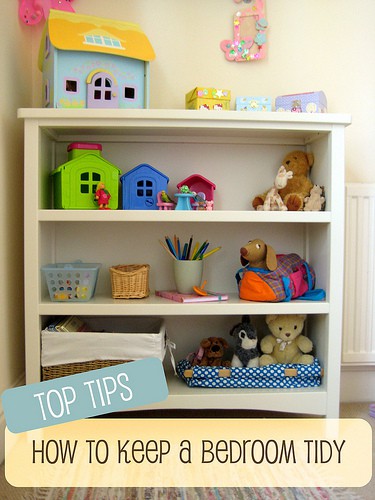How do you keep a child’s bedroom tidy? Here are three tips I use to contain clutter, keep a calm bedroom atmosphere and still invite plenty of play.
Things that go bump in the night
Being woken up by my daughter at 3am this morning has got me thinking about children’s nightmares and how we can help them deal with them. It seems that children often begin to talk about their dreams around the age of three or four, but it’s understood that they have been experiencing them from birth. So what can parents do to help their children get a good night’s sleep?
A good bedtime routine can help. Following a ritual each night can be very reassuring for children and help them make the transition from busy daytime activities to a calm bedtime. The traditional routine might be bathtime, story and then being tucked in with a kiss but you might like to include aspects which are special to you and your child. We always have a conversation about what we’ve done that day and what nice things we have planned tomorrow. You might like to have a ‘guardian’ that your child takes to bed with them, to look after them ’til morning. Both my daughters have a ‘dreamtime fairy‘ who hangs above their bed and a teddy who gets tucked in with them. A friend of mine uses a Native American ‘dreamcatcher’ – made from a wooden hoop threaded with a web and decorated with feathers and beads. This is hung above her daughters bed and traps bad dreams in its web.
Some families use other methods to rid the house of bad dreams before settling down for the night. I know of one little girl who wooshes round the house with her magic wand to banish bad dreams, but you could use whatever captures your childs imagination – a trumpet to scare them away or a super hero torch perhaps? Some people check under the bad and in the wardrobe to show there are no monsters lurking but I think this tells the child you believe there might be monsters there sometimes, which is hardly reassuring.
When your child experiences a nightmare, especially the first few times, it can be very frightening for them. I think it’s important to explain what dreams are (we say they’re a story in your head, like a DVD), that everyone has them and, importantly, they’re not real. I encourage my children to talk about their dream the next day, when they are feeling calm and safe. You could help them to re-frame their dream, by taking about a different ending it could have – perhaps the monster falls into a pile of jelly. You could ask your child to draw a picture of what they dreamt about and then let them scrunch up the paper and throw it away.
Finding out what your child’s nightmare was about can give an insight into what is worrying them. One child had dreamt about a wolf and was reassured when she found out that no wolves live in our country. She wanted to see on a map where they do live, and find out whether they could swim! I think this helped her feel a measure of control about her nightmare. I also I tell my children, if they are woken up by their nightmare, they should say ‘Go away silly dream!’ – as this empowers them, helping them to feel in charge.
If you have any other tips for a good night’s sleep please post a comment, as I’d love to hear your ideas.
Let’s hope for sweet dreams tonight.


